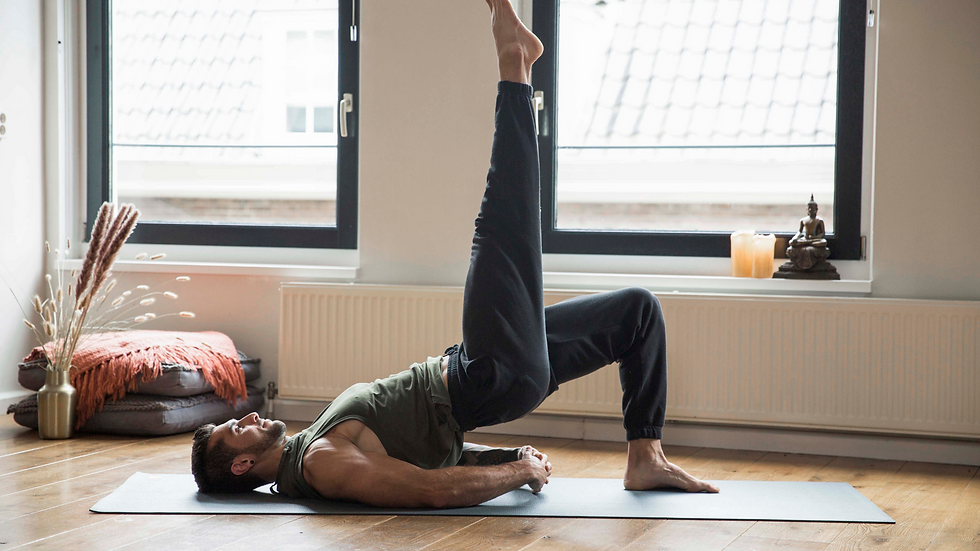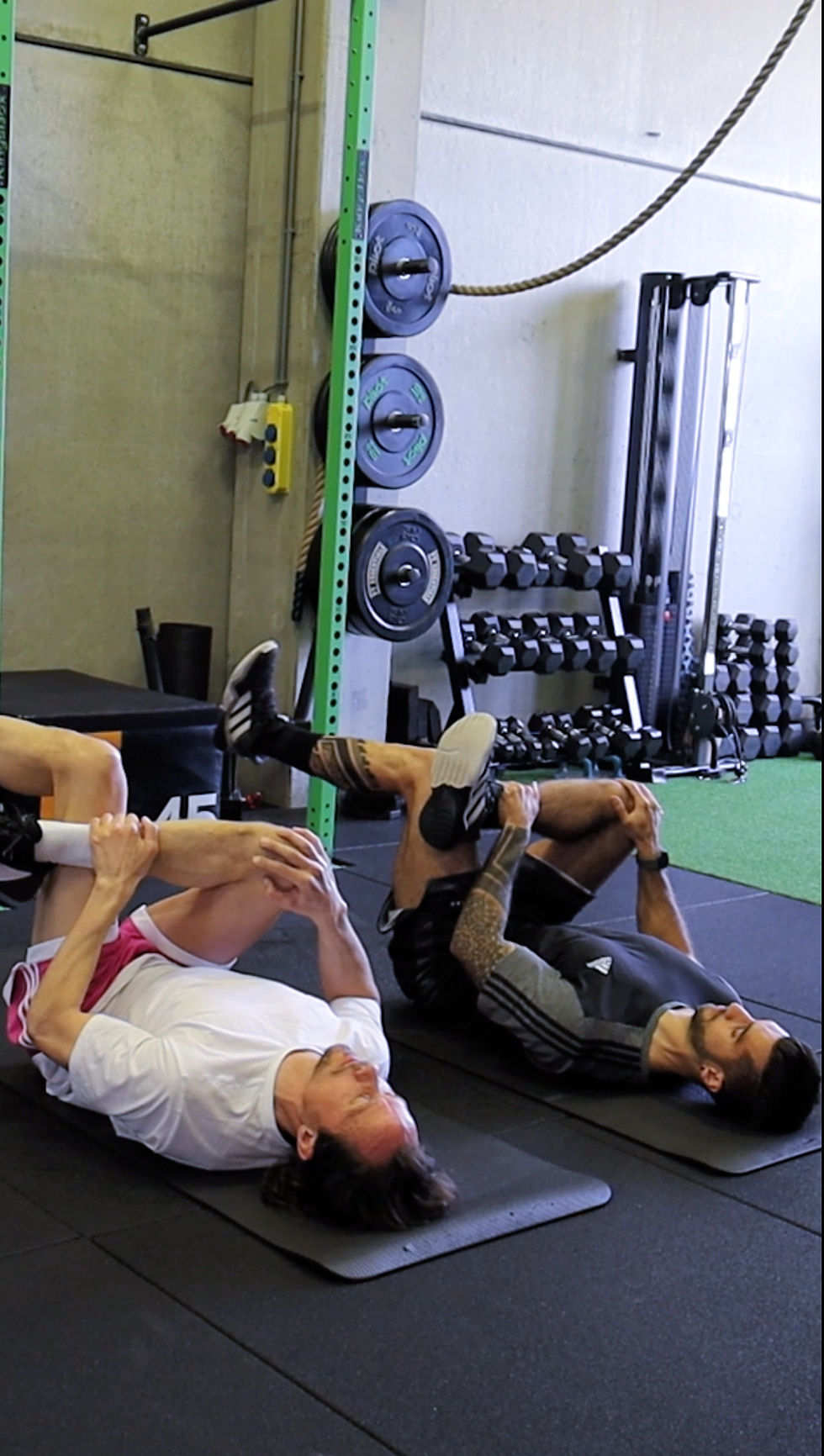The Best Core Exercise You Can Do (And Why It’s Not Crunches)
- Kebko Kabakibi

- 1 day ago
- 4 min read

When most people think of core training, they picture endless crunches or sit-ups. But the truth is — those aren’t the most effective or safest ways to build real core strength.
As a personal trainer in Amsterdam Noord, I’ve helped many clients improve posture, balance, and performance by focusing on functional core exercises — movements that strengthen your abs, back, and hips together, not just your six-pack.
If you want a simple, guided way to build a strong, stable core safely, check out my
Abs & Core Training Program – Basic Strength & Core Stability to Prevent Injuries
It’s designed to help you strengthen your midsection, improve stability, and prevent injuries — at home or in the gym.
The Winner: The Plank (and Its Variations)
If I had to pick one core exercise that works for almost everyone — from beginners to athletes — it would be the plank.
The plank trains your entire core, not just the abs. That includes your deep stabilizing muscles, lower back, glutes, and even shoulders. It teaches your body to maintain tension and stability — something you use in nearly every movement, from lifting weights to sitting upright at your desk.
How to Do It Properly
1. Start Position:
Place your elbows directly under your shoulders.
Keep your body in a straight line from head to heels.
Engage your core — think of pulling your belly button toward your spine.
2. Common Mistakes to Avoid:
- Sagging hips (puts pressure on your lower back)
- Lifting your hips too high (reduces core engagement)
- Holding your breath — remember to breathe!
3. Trainer Tip: Start with 20–30 seconds, focus on perfect form, and build up gradually. Quality beats quantity.
Progressions: Make It Harder (Safely)
Once you master the basic plank, try these variations to keep progressing:
Side Plank – Builds oblique and hip stability.
Plank Shoulder Taps – Add movement and anti-rotation control.
Plank with Leg Lift – Improves balance and glute strength.
RKC Plank – Creates maximum core tension for short bursts (10–15 seconds).
These progressions (and more) are part of my
Abs & Core Training Program – Basic Strength & Core Stability to Prevent Injuries
which guides you through structured routines to build functional strength and stability.
The Complete Core Workout
Here’s a simple core circuit you can try 2–3 times per week. No equipment needed — just a mat and consistency.
Trainer Tip: Rest 30–45 seconds between exercises. Focus on control — not just speed.
This exact structure is part of my Abs & Core Training Program — where we take you through progressions, video demos, and step-by-step guidance to strengthen your core safely and effectively.
Follow This Core Stability & Functional Strength Routine
This routine is designed to build a strong, stable core that supports your posture, balance, and movement in everyday life. Each exercise focuses on improving deep-core strength, coordination, and total-body control — great for anyone who wants to move better and feel stronger in daily tasks or training.
1. Plank
3 sets • 30–45 seconds Focus: Full-core stability
Keep your body in a straight line from shoulders to heels, engage your core, and avoid sagging hips.
2. Side Plank (each side)
3 sets • 20–30 seconds per side Focus: Obliques & hip stabilizers
Keep your hips lifted and your shoulder stacked over your elbow. Great for lateral core control.
3. Dead Bug
3 sets • 8–10 reps per side Focus: Deep core & coordination
Lie on your back, brace your abs, and move opposite arm and leg without arching your back.
4. Glute Bridge
3 sets • 12–15 reps Focus: Core + glute activation
Drive through your heels to lift your hips. Squeeze your glutes at the top, don’t over-arch your back.
5. Bird Dog
3 sets • 8–10 reps per side Focus: Lower-back stability & coordination
Extend one arm and the opposite leg while keeping your torso steady.
6. Hollow Hold
2 sets • 20–30 seconds Focus: Deep abdominal strength
Press your lower back into the floor, extend your legs and arms, and hold tension throughout your core.
7. Weighted Walking Lunges
3 sets • 60–90 seconds of walking lunges Focus: Real-life core control, legs & balance
Stay tall, engage your core, and take controlled steps — this builds strength that transfers to real-life movement.
-Perform this routine 2–3× per week. Focus on form and controlled breathing, not just intensity. Record a few sets to track progress and check technique.
Why Crunches Aren’t Enough
Crunches mainly work the surface muscles (rectus abdominis) and can put strain on your neck and lower back if done incorrectly. Real-life strength comes from your deep core — the muscles that stabilize your spine and help you move efficiently.
That’s why planks, carries, and anti-rotation exercises (like Pallof presses) are far more effective and functional.
The Bottom Line
The best core exercise isn’t about fancy equipment or endless reps — it’s about control, stability, and consistency. The plank (and the exercises above) are simple, safe, and powerful ways to build a strong, functional core that supports you in everything you do.
If you’re ready to take your training to the next level,
join my Abs & Core Training Program – Basic Strength & Core Stability to Prevent Injuries
Or book a free consultation to get a personalized strength and mobility plan in Amsterdam Noord.





Comments